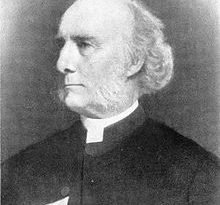200 Years Ago in Norwich : State of the City
![]()
And another in my series of posts from the Norwich Mercury of 200 years ago, this one was published on 13 December 1823, and it relates to the condition of the streets of Norwich. I rather like the picture that this article conjures up of the state of Norwich streets at the time, albeit clearly greatly improved in the years that preceded this article.
“The inhabitants and the visitors of Norwich must have (for some time past) regarded with no slight satisfaction the attractions which have been going on in various parts of the city. We well remember the anticipations of the friends of the act for watching, paving, lighting and cleansing our streets, and it appears to us the time is now come when the realisation of so much of what they prophesied is come to pass, that they have cause for triumph. Certain it is that many of the streets of the city are greatly improved: the shops are in themselves more elegant as well as more convenient, and the display of goods of all sorts is more varied and tasteful. The progress of things has, without doubt, effected many of these desirable changes, but no little is owing to the spirit of improvement, which, when once excited into action, is unlimited in its operation.
One present purpose however is not so much to speak of general as of a local alteration, which appears to be to be amongst the most beneficial the city has yet undergone. We allude to the striking improvement in the market and the streets adjoining. Never, we will venture to assert, has any thing been done since the passing of the Act (near seventeen years) more worthy of public regard and approbation, than this will be when its completion, which is nigh approaching, is effectuated. In tracing its progress, we observe that a sewer of considerable length and capacity has been made sufficient to receive the filthy tide of waters which formerly flowed on the surface from offensive private drains and channels, to the great annoyance and inconvenience of the inhabitants, and the utility of common sewers was never made more perceptible.
The pavement between White Lion Lane and Brigg’s Lane, which was of late absolutely unsafe for carriages, from its irregular surface, broken into deep ruts and holes, is now brought to a smooth and commodious level, with a spacious foot-way on its sides, and is indeed in no respect inferior to the best-paved streets of the metropolis. The Hay Hill, from its rude, mis-shapen and irregular form, intersected as it was by channels in all directions, and almost impassable, is now made of easy ascent, and perfectly safe both as a carriage-way and to foot passengers.
These improvements are continuing to Bethel Street. And here we are most forcibly struck with the metamorphosis which the public spirit of a single gentleman has wrought. It is within every one’s remembrance, that this street was amongst the vilest in the whole city – the houses dirty and squalid, the pavement all but impassable, while the wretched inhabitants of the adjacent yards and thoroughfares were of a description to reduce and almost annihilate the value of the few decent habitations the street contained. Since Mr Hawkes came to live in it, he has gradually removed every one of these objections; and while he has advantaged his own property, he has ornamented the whole length of the street, and set a noble example of what may be effected by a spirited individual. For the other improvements, the city is indebted to the contribution of £300 from the Corporation and the liberal subscription of £200 from the inhabitants of St. Peter’s Mancroft, which have enabled the Commissioners, who are always anxious to do their utmost, to effect the work.
Nor can we conclude our article without paying to Mr Rooks, the surveyor, the tribute that is due to his talent and attention. This gentleman has been resident here during a long and active life, and he has been employed in great public works and in many private undertakings, which, if less conspicuous, are scarcely less ornamental or less useful according to their degree. It is therefore with particular pleasure that we offer our best acknowledgements to him for he combines zeal with judgement and both with the feelings and the manners of a man of taste and talent.
This subject matter naturally leads us to something further. One of the most narrow and dangerous avenues to the market is the confined street called Brigg’s Lane. St. Stephen’s Street is greatly bettered, and wants but little to render it a good and open approach. Rampant Horse Street is still more spaciou, but those advantages are incalculably lessened by the existence of the insufficient passage which Brigg’s Lane presents. If we remember rightly, the Rev. Henry D’Oyley, a Clergyman of Hempnall, devoted some of the last years of his life to soliciting from parish to parish and from house to house a subscription for the purpose of enlarging this avenue.”



